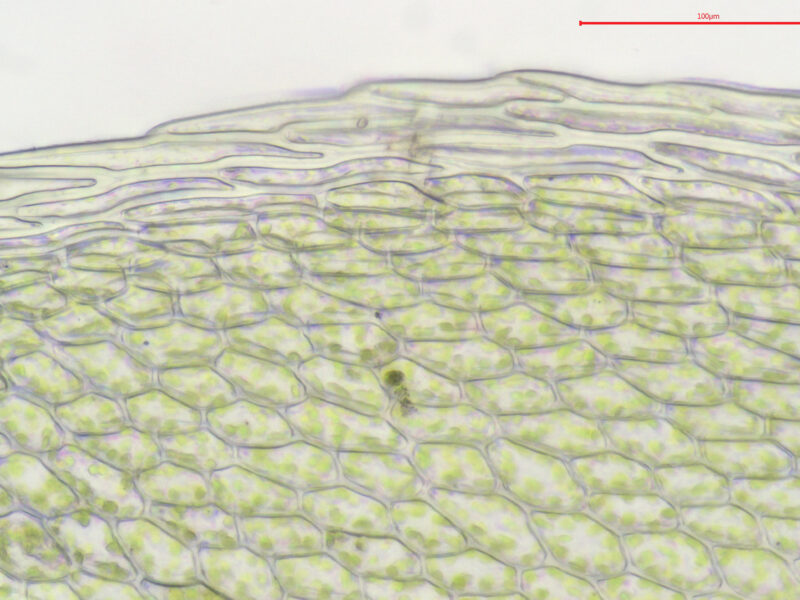Identification notes
This is a very common species that the beginner will encounter quite quickly. It typically forms domed dense cushions or fills crevices on hard surfaces such as rocks and tree bases and manmade habitats such as walls, roofs, concrete and tarmac. It is not usually found on soil. The capsules are large, pendulous and freely produced.
Individual leaves are large and translucent with a long excurrent greenish hair point, and they are generally widest at or above the middle. Many other cushion forming acrocarps in this habitat have brighter green leaves because the light is scattered from their surface by papillae, but in Bryum the cells are smooth. One of the most characteristic features is that when dry the leaves twist around the stem in a corkscrew fashion. Sometimes tubers can be found.
Closely related species with similar leaves include the much less common Bryum moravicum and Bryum torquescens. Bryum moravicum is usually an epiphyte which forms rather looser patches on more friable organic substrates such as old bark that has begun to break down. It is characterised by plentiful tufts of thread-like axillary gemmae. Bryum torquescens is found on soil in open calcareous habitats such as chalk grassland. the leaves are not so twisted when dry, but fertile material is needed to be sure.
Read the Field Guide account



















